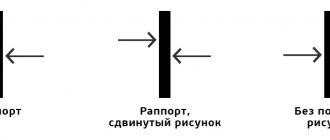Motorists know better than anyone how important good roads are. Often the welfare of a state can be judged by the condition of roadways and highways. The proverb that you can get to Rome by any route has a good basis. This province had a very well developed transport system. From almost every province it was possible to reach Rome along a hard paved road. At the moment, a large number of types of road surfaces have been developed. Many of them are already in use, others are in the process of being implemented. This article will discuss each of them in detail.
Classification of road surfaces
Transport is one of the pillars on which the economy stands. It provides connections between enterprises, industrial, trade, agricultural and supply facilities. The development of any city, region and country directly depends on the development of the transport system, in which roads occupy first place. Depending on the characteristics of road operation, they are classified into several types. The construction of each is carried out strictly according to technology regulated by specialized bodies. In this article we will take a detailed look at the classification of road surfaces.
Why is it better to order turnkey road construction?
Road construction in a turnkey format implies 100% implementation of all necessary activities, without the need for modifications and any participation of the customer throughout the entire process. This includes both the design and direct implementation of work, as well as the purchase of materials, their delivery, soil removal, the use of special equipment, landscaping, etc.
What does carrying out a full range of work by one organization provide:
- Maximum coordination of actions;
- Compliance with project delivery deadlines;
- Maintaining quality at all stages;
- Monitoring the qualifications of employees;
- Reduced financial costs.
At the same time, it is important that the contractor has sufficient resources, high professionalism and extensive experience in carrying out such work, since he is faced with the task of organizing and carrying out road construction on his own - from design to laying asphalt and improving the territory.
What else does turnkey road construction give the customer:
- There is no need to come to the site and supervise the construction process;
- There is no need to select, purchase and organize delivery of materials;
- There is no need to rent special equipment or select qualified workers;
- Financial costs are reduced;
- The delivery time for the project is being reduced.
When choosing a road construction company, it is recommended to pay attention to several nuances that will allow you to reduce costs as much as possible while obtaining a high-quality result.
General road structure and classification of road surfaces
Any road consists of two layers:
- Travel clothing.
- Subgrade.
Road “clothing”, in turn, consists of two more components:
The coating is highly durable and wear-resistant. This is the “upper” part of the road that takes the impacts of car wheels and weather conditions. The coating must be durable, moisture-resistant, stable and rough in order to ensure the necessary grip of the wheels on the road. Otherwise, the number of accidents in such areas will simply go through the roof. The coating also consists of two more layers:
- Bearing layer.
- Wear layer.
The base is the load-bearing part of the road, which consists of multi-layered soil or stone materials specially treated with binders. Any road in cross section resembles a piece of “Napoleon” with “cakes” of different density and thickness.
Tip: Road pavement is the focus of road construction. The share of its cost in total construction costs usually exceeds 50%. That is why the emphasis is on the quality of clothing. The higher the category of the road, the more reliable and durable this layer will be.
What stages does road construction include?
Road construction is a complex technical task, so the process always begins with preliminary planning and calculations. Only after a detailed analysis and consideration of all factors can we begin to carry out road construction work, which is carried out in several main stages.
Also, preliminary planning allows you to estimate the volume of work and the total area of the roadway. The price per m2 of asphalt laying will decrease as the area being paved increases.
Main stages of highway construction:
- 1. Preparatory: 1.1. Geodetic research;
- 1.2. Development of a road construction plan;
- 1.3. Design calculations;
- 1.4. Economic calculations;
- 1.5. Preparation of project documentation.
- 2.1. Removing obstacles, cutting down trees (if required);
- 3.1. Laying geotextiles – separates structural layers, promotes drainage, increases structural strength;
- 4.1. Laying asphalt concrete - in stages, in several layers;
- 5.1. Construction of sidewalks;
Road construction, at each stage, must be carried out in compliance with technology, as well as in accordance with all regulatory requirements. In some cases, environmental protection measures
, which may include installing noise barriers and replacing windows in houses located near the road.
Rigid and non-rigid coatings
Flexible roads can be “sorted” by type:
- Ground. Used for paths in parks and gardens. They perform a purely decorative function. They require virtually no investment to create.
- Crushed stone. Not designed for high loads. They are actively used in remote corners of rural areas where there are no opportunities for an asphalt alternative.
- Gravel. Almost identical to crushed stone. They differ only in the base material. The purpose of use and general characteristics are almost similar to crushed stone.
Hard ones, in turn, can be divided into several subgroups:
- Asphalt. Currently the most common type of road surface. This popularity is justified by a good combination of the price of materials and the quality of the finished fabric.
- Paved. Gradually they became a thing of the past. The construction is based on the laying of natural stone, which causes the overall high cost of the entire process. Used exclusively for decorative purposes.
- Prefabricated cement structures. They are distinguished by increased stability and the ability to withstand enormous loads. They are used in the construction of bridges, which provides them with additional stability.
Advice: each of the above types can only be used in strictly defined situations for certain types of transport. Rigid road surfaces are considered a couple of degrees higher than non-rigid ones. They are stronger, but during construction they also require significantly higher financial costs for materials and labor.
General concepts
Carrying out activities that are designed to improve the situation with regard to the quality of roads is much more difficult than it might seem at first glance. They involve the process of research and planning for a specific area. To reduce costs, along with human resources, new pieces of equipment are constantly being introduced, which also speed up these processes. For example, in the past, concrete slab pavement installations used molds that were left inside the pavement and could reduce the quality of the pavement and also impact overall costs. Removable paving formwork is now used and is used on several sites. The production lines that ensure the supply of concrete have also been modernized. At the same cost, it was possible to increase the amount of raw material for road surfaces at the output.
Up to a certain point, it was necessary to wait a significant period of time until the finished road surface gained rigidity for use. Modern hardener additives have reduced the time to a minimum. A unique compaction scheme has also been developed using additional technology, which makes it possible to reduce the amount of water in the finished road surface and, accordingly, speed up hardening.
Afterword
When choosing the type of future road, experts always start from a combination of factors, the main one of which is considered to be the intensity of traffic on the site. The higher it is, the higher the wear of the road surface will be. Accordingly, in areas of constant use, roads are built more durable. For more “quiet” areas, a lightweight version is used, which, if necessary, can be reclassified as a transitional one if an increase in load is planned in the future.
Hard surfaces prevail in densely populated areas with well-developed infrastructure. They are much inferior to non-rigid roads in rural areas, where only central streets or roads leading to large agricultural facilities can usually boast of a hard surface.
Operation process
Everyone knows what will happen to a house or any thing if it is left unattended. The laws of thermodynamics will certainly take effect and lead to partial or complete destruction. This factor does not bypass road decking. Therefore, from time to time they need maintenance and repair. Maintenance may mean restoring high-quality adhesion of tires to the road surface. To do this, ice and snow drifts are eliminated using equipment and special chemical additives. In some areas, pothole repair is allowed, which is designed to increase the evenness of the road surface.
During the rainy seasons, drainage systems located near road surfaces are inspected and cleaned. If this is not done, then the liquid will accumulate in the layers of the flooring and, if exposed to a large weight, it can simply be washed away. In desert areas, where a large amount of dust can be applied to the flooring, it is treated with a special binder. It is calculated from the nominal flow rate in liters per square meter. This flooring treatment guarantees increased comfort for the driver and mechanical parts when driving on the road surface.
Categories of roads. Classification and purpose of roads
Road communication is the most important part of the economy of any country, because it plays an important role in the level of development of industry and production of the state. And Russian roads are no exception in this regard. In order to determine the level of quality and traffic flow, a list of specific requirements for roads has been developed. Those of them that fully meet the presented criteria are capable of accepting transport flows of any complexity and completeness and facilitating the delivery of passengers and cargo in all directions and over any distance. That is why it is worth paying close attention to the question of exactly what categories of highways exist and how they are classified.
European technologies
Despite the fact that European road construction technology is considered conservative, countries such as Portugal, Austria, France and the Netherlands occupy the 2nd, 3rd, 4th and 5th places in the ranking of countries with the best roads, and German autobahns have long been appreciated by millions of motorists from all over the world.
In general, American and European road construction technologies are similar. The main feature of European roads is a huge, durable asphalt base (up to 2 meters), consisting of several layers of different materials. A layer of concrete and then asphalt are laid on it.
Europeans approach business in accordance with their characteristic mentality - work is done carefully, painstakingly and slowly. Citizens of European countries traditionally treat roads with care, and special services constantly monitor the technical condition of roads and supervise cargo turnover.
How everything works
To increase traffic safety and improve cross-country ability, a modern highway is developed as a complex technical structure and is built on a specially designated area of terrain called a right-of-way. There the roadway itself is constructed, along which vehicles move. To ensure increased throughput, driving comfort and traffic safety, almost all types of roads are equipped with hard surfaces: asphalt, concrete and other construction materials. The width of the carriageway for a single-lane road is at least 7 meters. A small part of the right-of-way does not have a hard surface and is not included in the road surface - it is used as additional area. Detour roads and bicycle paths are laid here, and this part of the road is also allocated for the movement of tractors and horse-drawn vehicles. Additionally, in this part of the right-of-way, drainage and forest protection structures are installed, and when repairing the road surface, construction materials are immediately stored.
How to minimize road construction costs without losing quality
There are several ways to save your budget when building a highway. For example, if the road is not highly congested, then there is no urgent need to use the highest quality and most expensive materials.
However, the quality characteristics of the coating directly affect the service life of the road - the better the physical and mechanical characteristics of asphalt concrete, the longer the coating will last, and the less often it will require maintenance or repair. Therefore, modern road construction is carried out with an emphasis on high quality pavement.
It is best to reduce the cost of road construction without losing quality - this can be achieved if you choose the right contractor.
What a contractor must have to make road construction as profitable as possible for the customer:
- Asphalt concrete plant (preferably several);
- Our own fleet of road special equipment;
- Own design bureau;
- Highly qualified specialists;
- Quite a lot of experience in road construction.
Asphalt concrete plant (ACP)
owned by a road construction company allows us to ensure the minimum cost of asphalt concrete mixtures, as well as 100% quality control. A plus will be the presence of an asphalt plant near the construction site - this will reduce logistics costs.
Own special equipment
allows you to exclude from the estimate the cost of renting asphalt pavers, road rollers, dump trucks and other necessary equipment.
Own design office
, subject to the high professionalism of specialists, will make it possible to optimize road construction as much as possible, as well as take into account all the necessary details at the design stage.
Highly qualified employees and extensive experience
construction allow to ensure high quality of the road surface. As a result, the need for maintenance of the coating will be reduced in the future, which will eliminate the costs of this item. Also, road construction carried out by competent specialists is completed much faster.
Different categories
Categories of highways in different countries of the world have various evaluation criteria, however, by generalizing them a little, we can make approximately the following list:
- E – overpasses of European significance;
- M – routes of federal significance;
- R – roads connecting administrative centers;
- A – federal and regional roads, approaches to the largest transport hubs - airports, sea and river ports;
- K – regional roads;
- N – other local roads.
There are also several other criteria by which roads for different purposes can be classified:
- by coverage width and number of lanes;
- according to the principle and method of crossing with different types of roads;
- by the presence or absence of markings and dividing strips.
It is the last dividing principle that says whether the road is operational, whether it intersects with other roads and how many times, how traffic is regulated, how many turns there are and other parameters.
Modern technology.
Roads and bridges must be repaired or reconstructed as needed. The service life of roads is 20–30 years, bridges – from 50 to 100 years.
Modern technology makes it possible to more effectively manage roads, plan and design them, build and operate them. Computer-aided design systems, as well as computer data processing systems used in all areas of road construction and operation, have become important.
Advances in modern technology such as infrared thermography and ground-penetration radar make it possible to identify structural and physical defects in roads and bridges.
Electronics are beginning to play an increasingly important role in regulating road traffic. Thus, the development of electronic vehicle control systems with a map on the dashboard and voice alarm and automated traffic control systems in central urban areas is underway. See also CIVIL ENGINEERING.
Principles of classification
Basically, all roads are classified primarily based on the principle of how traffic is carried out and how easy access is provided to them. If we consider the categories of roads from this position, we can distinguish 3 main classes:
- motorway;
- expressway;
- ordinary road.
Each of them has its own subclasses, that is, it is divided into types depending on the geographical location:
- regional;
- regional;
- territorial;
- regional;
- national;
- international traffic;
Of course, such a division is rather arbitrary, but in practice everything is somewhat more complicated. The fact is that each country adopts its own categories and signs of division - in Russia, for example, there are five categories of roads, and in Ukraine there are only four.
Development of the national project “Safe and Quality Roads”
This year, the government approved the passport of the national project “Safe Quality Roads”. It was updated not only in the name (the word automobile was removed), but also in its content and was brought into compliance with the Decree of the President of Russia.
This project aims to promote road safety. Its main indicator is how quality will be ensured along roads in the country’s largest cities. In 2024, the share of road networks in them should be eighty-five percent, according to regulatory requirements.
Development of the national project “Safe and Quality Roads”
In the updated version of the document, the project structure was expanded from four to six federal projects.
Under the leadership of the Ministry of Transport of the Russian Federation, the projects “Regional and local road network” (formerly called “Road Network”) and “System-wide measures for the development of road infrastructure” are being implemented. This year, the implementation of new federal projects “Development of the federal highway network” and “Modernization of passenger transport in urban agglomerations” has also begun.
The Russian Ministry of Internal Affairs, as before, is overseeing the “Road Safety” project, and the Russian Ministry of Defense is in charge of the implementation of the “Highways of the Russian Ministry of Defense” project.
According to the plan of the federal project “Regional and Local Road Network”, regional roads and the road network of urban agglomerations will continue to be brought to standard conditions. For example, this year the program of events included roads whose length is more than sixteen thousand kilometers.
Particular emphasis will be placed on bringing artificial objects to a standard state. Next year, reconstruction of emergency and pre-emergency bridges will begin. In 2023, the construction of overpasses on roads within the regions will begin.
The next direction of the national project is the federal project “Development of the Federal Backbone Network”. According to the government plan, by 2024 it is necessary to create and modify sections of federal highways with a length of one thousand eight hundred ten kilometers and six hundred meters.
Due to the effective implementation of a set of measures of the federal project “Road Safety”, a decrease in the number of deaths resulting from road accidents is expected. The new project “Highways of the Russian Ministry of Defense” should improve the safety and quality of departmental roads to meet regulatory requirements, and this should make service in army units more in demand among Russian citizens.
Changes occurred both in the structure and geography of the project. Starting this year, the city of St. Petersburg became a new participant.
The main task of road campaigns is to implement a high-quality structure and an appropriate level of safety in the regions of the country. Information that a particular track has been brought into excellent condition is now the norm. This is due to the fact that financial resources from the country’s budget allocated for the construction and repair of roads are subject to strict control, as are the processes themselves to improve Russian roads.
First category
The first category of roads in Russia includes motorways, expressways and highways. Such overpasses have a width of at least 15 meters and are equipped with a dividing strip. There are at least two lanes in each direction, at least 3.75 meters wide. Such roads are designed for high traffic volumes and are equipped with high-quality concrete pavement that can withstand a large influx of vehicles. The capacity of such overpasses exceeds 7,000 cars per day, while vehicles move at a speed of at least 120 km/h.
Description and features
The width of the dirt road should be 4–5 meters. This is enough for two cars to pass each other on it. If the road leads to a summer cottage and will be used only by one owner and his rare guests, a width of 2 meters is sufficient. There are several types of dirt roads:
- Improved. Used between regional settlements. These roads are reinforced with a sand-gravel mixture or crushed stone. They are indicated on the map as two yellow parallel lines.
- Dirt country road. Usually it is not reinforced with anything; at best, it is rolled over with a grader. The rural road on the map is indicated by a solid stripe.
- Field or forest. Outwardly it looks like two parallel narrow paths. Such a road is often half overgrown with grass. It is marked on the map with a dotted line.
Dirt roads cannot withstand the weight of heavy lifting vehicles. Ironing (profiling) must be carried out systematically after heavy or prolonged rains.
The water resistance of the soil can be increased with the help of mineral additives. Cement, bitumen, and tar are used as binding materials. Sandy loam soil requires profiling most of all. Often, when repairing dirt roads, they are completely covered with crushed stone or gravel.
Fourth and fifth categories of roads
The fourth category of roads is characterized by the presence of a coating of rather low quality. Because of this, movement along them can be very difficult, especially in the autumn-spring period. Such tracks can carry no more than 1,000 vehicles per day, and the speed along them is limited to 80 km/h. For heavy vehicles, passage on such roads is most often completely closed, due to the fact that the movement of heavy vehicles leads to rapid and serious destruction of the road surface.
Types of road pavement.
Road pavements of different durability for different permissible loads can be obtained by combining various road building materials. The most important thing for the longevity of a good pavement is the drainage and compaction of its underlying layers. Water in the road bed promotes settlement and lateral slip, and can also cause heaving due to freezing or expansion of some clays. A traffic engineer knows which materials drain more easily and which drainage system is more economical. Sometimes during road construction it is necessary to remove natural soil to a considerable depth and replace it with factory-prepared granular material. All loosened and applied road construction materials must be compacted in thin layers. For this purpose, heavy steel rollers with small teeth are used, moved by tractors. There are also vibratory rollers. Particularly careful compaction is required for the coastal abutments of bridges and the places of underground communications passages.
Forest roads - classification
A separate type of classification can be called the purpose of roads. Forest roads are a separate type of roads in Russia. As is clear from the name, they are located in forested areas and serve for hassle-free transport access to these parts of Russia.
- forestry - designed to monitor the condition of forest areas, it is along them that rangers walk around the territories entrusted to them;
- timber carriers - provide transport links when felling timber for industrial and sanitary purposes; since heavy freight vehicles move along them, they are additionally strengthened to ensure increased cross-country ability for heavy vehicles;
- fire protection - designed to provide fire crews with access to potential fires;
In earlier times, one more type of road could have been added to this list - a flat road, but now they are practically not built, and the old ones have long since fallen into disrepair. The fact is that the road surface in this case is a deck made of solid logs. It is possible to build such a road quickly, but it is impractical - after all, wood is not cheap these days, and a lot of it will be spent on such a road. And the service life of such a coating compared, for example, with asphalt, is short; the wood quickly rots and deteriorates in unfavorable weather conditions.
American technology
Russians who have had the chance to drive along American roads will never forget the degree of pleasure they experienced - the quality of interstate highways causes a storm of enthusiastic emotions and positive epithets.
Many countries today use American technologies for constructing highways. Why are the roads in the States so good?
At one time, the US government took a responsible approach to the necessary expensive research in the field of road construction. Large-scale investments in engineering developments and in the organization of the construction process were not in vain - today the Americans have the best interstate highway system in the world that meets the highest operational characteristics.
In the United States of America, most of the most significant and significant highways are built using construction technology that has been proven over decades. Monolithic cement concrete is used in construction, which provides the canvas with a high degree of strength, durability and unpretentiousness to load.
When laying a road cushion (which is mainly used for gravel, clay and sand), each layer is compacted especially carefully and treated with chemicals. Thanks to this, during the entire service life of the road, the coefficient of water content in the cushion does not change - this does not allow it to sag over time. Next, a double layer of asphalt is laid on the pad and only after this begins the installation of reinforcement for the concrete sheet and the direct pouring of the concrete mixture.
Of course, this road construction technology entails high costs - for example, the cost of one kilometer of an American highway in Russian rubles is about 270 million rubles. For comparison, in Russia 1 km of a federal highway costs 47-48 million rubles. These figures allow us to judge the difference in the quality of roads.
How important is it to repair roads?
As you know, not all Russian roads can boast of new high-quality pavement, but this is one of the most important factors that should not be neglected. Quite a lot depends on the quality of the road surface, because to ensure a quality life for people, cargo transportation (not to mention passengers) must be carried out as quickly, safely and efficiently as possible.
Often, the inconsistency of the road surface with the requirements of modern transport realities and the ever-increasing traffic flow can lead to many negative consequences: an increase in the number of accidents, accelerated wear and tear of vehicles, excessive fuel consumption, a decrease in traffic speed and many others. It’s scary to even imagine that, for example, someone’s life may depend on which road a particular medical drug is delivered or how quickly a fire truck can arrive. So the road surface also plays a significant role in the classification.
conclusions
A high-quality road surface is constructed from a certain number of structural layers using various materials. The main technological layers are:
- Soil base;
- Geotextiles;
- Sand layer;
- Geogrid;
- Crushed stone layer;
- Asphalt covering.
When constructing highways, it is also necessary to comply with road construction technology in order to ensure sufficiently high design characteristics. The use of high quality materials also makes the road surface stronger and more reliable.
At the same time, the construction of highways with low traffic load can be carried out using simplified technology, as well as using cheaper materials.
Classification of roads depending on coverage
Depending on the type of road surface, the following types can be distinguished:
- pavements;
- cement concrete;
- covered with gravel or crushed stone;
- ground;
- tar concrete;
- asphalt concrete;
- coated with materials containing organic substances having astringent properties.
Summarizing the above, we can once again note the importance and necessity of all work related to the arrangement and repair of roads, as well as maintaining them in proper condition. New technologies open up a lot of opportunities to ensure that both the country road and the highway remain at a decent level in terms of durability and quality of the coating and are able to provide high cross-country ability for vehicles.
Types of asphalt concrete by grain size
| Grain | Characteristics and scope |
| Coarse grain | The diameter of the aggregate fractions is from 20 to 40 mm. It is used for the construction of internal layers of the coating, helping to stabilize it. Reduces the likelihood of rutting. Protects deeper layers and prevents the passage of moisture. Acts as a base layer for fine-grained asphalt. |
| Fine grain | The diameter of the aggregate fractions is from 10 to 20 mm. It is used in surface layers, where it absorbs the mechanical impact of vehicles, protects the less durable internal layers of the structure, and prevents the ingress of water. It is characterized by higher density, strength and wear resistance, and also fills the voids between large fractions of the coarse-grained layer. |
Road construction is carried out using both types of asphalt concrete. First, the coarse-grained mixture is poured, and fine-grained asphalt is laid on top of it. This tandem allows you to balance the properties and characteristics of the coating.
The influence of speed on road safety
According to statistics, after a collision with a car moving at a speed of thirty kilometers per hour, people survive in eight cases out of ten. When a car moves at a speed of sixty kilometers per hour, in eight cases out of ten people die. The main reasons for this are that the braking time becomes too high, and the time to make the right decision becomes less.
To make roads in Russia safe, it is necessary to set a speed limit of up to 50 kilometers per hour. Here are two arguments in favor of this decision:
- When cars travel at 50 kilometers per hour, pedestrians survive in 60 percent of road accidents . But if the speed increases to 60 kilometers per hour, the number of deaths increases. It is reasonable to assume that a difference of ten kilometers is insignificant compared to the loss of life.
- A popular objection to the innovation is “the city will rise . Let's dispel this misconception. At low speeds, the distance between vehicles is reduced and becomes comfortable. Drivers require fewer stops and inconvenient, unplanned maneuvers. Traffic jams occur much less frequently. These benefits are absent at 60 kilometers per hour.
It should also be remembered that when driving at high speed on some part of the road, the driver will still stop before a traffic light or turn, which will ultimately cancel the advantage in distance.
Also, due to the low speed of cars, the number of accidents is reduced, and this greatly helps to improve the situation on the roads.
Consider the case of the UK introducing a 20mph speed limit in 2002 on 112 road sections. According to our units of measurement, this is 32 kilometers per hour. The result of the innovation pleased everyone: road accidents decreased by 56%, the number of deaths decreased by 90%, and injuries to children decreased by 64%.
At first, the British protested against the new rules, as they believed that it would make trips too long and life uncomfortable. They even appealed to the deterioration of the environment. But in the end, the speed limit made London's quality roads safer and the lives of the British people calmer.
On small streets with buildings, traffic should be limited to thirty kilometers per hour. Only this will return people, especially children, protection from the threat of road accidents in residential areas.
The influence of speed on road safety











